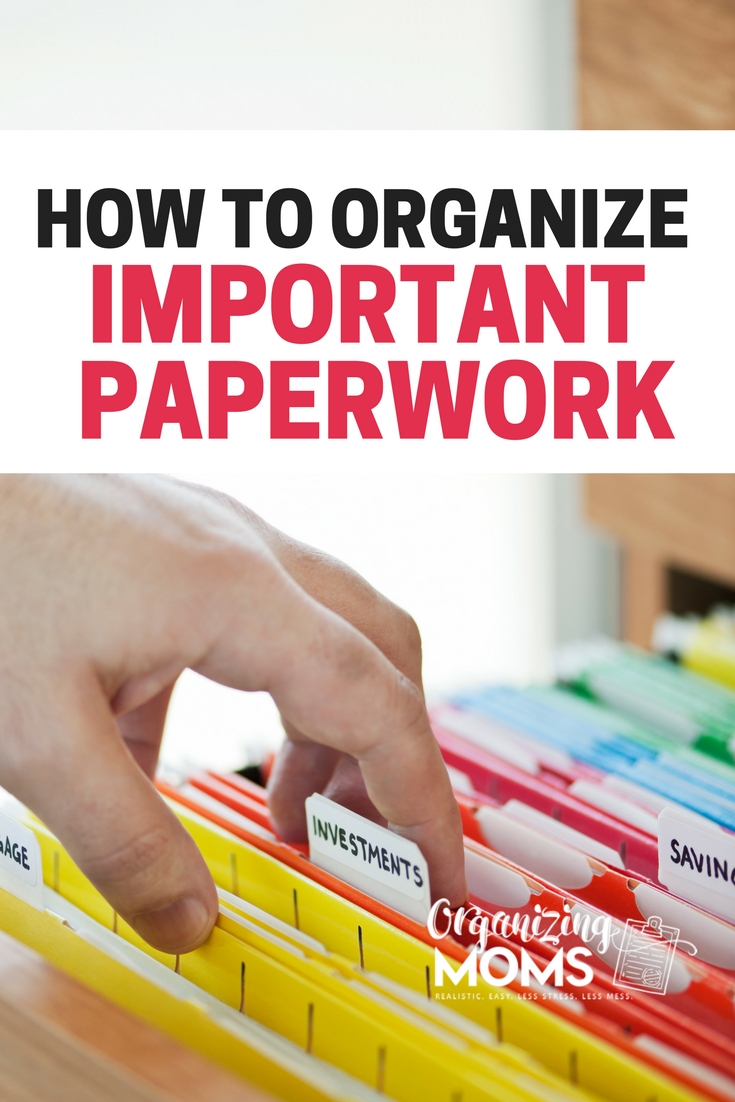5 Proven Tips to Organize Your Desk Paperwork Efficiently

Organizing desk paperwork can seem like a daunting task, but with the right strategies, it can become a manageable and even rewarding part of your daily routine. Whether you work from home or in a traditional office environment, maintaining a clutter-free workspace enhances productivity, reduces stress, and fosters a more focused mindset. Here are five proven tips to help you streamline your desk paperwork efficiently:
Utilize Color-Coding Systems


A color-coding system for your paperwork can significantly improve your organization efforts. Here's how you can implement this:
- Choose Colors Strategically: Assign different colors to different categories of documents. For example, red for urgent documents, blue for financial documents, green for completed tasks, and so forth.
- Use Color-Coded Folders: Obtain folders or hanging file folders in various colors or use colored labels on manila folders. This visual cue makes it easier to locate specific categories of documents quickly.
- Maintain Consistency: Make sure everyone in your office uses the same system or inform your family about the system if you're organizing at home. Consistency reduces confusion and enhances efficiency.
Implement the 'In, Out, and Action' Bins


This simple yet effective system helps manage the flow of paperwork:
- In Bin: For new or incoming documents that require your attention.
- Action Bin: For documents that need action, sorting them by priority.
- Out Bin: For completed tasks or documents that are to be filed or archived.
Each piece of paper should pass through these bins to ensure nothing gets lost or overlooked. Here's a quick note:
📌 Note: Ensure these bins are clearly labeled and placed in an easily accessible spot on your desk.
Embrace Digital Organization


Moving towards a paperless office or home can drastically reduce the physical paperwork:
- Scan Documents: Scan documents and save them in structured digital folders. Use a cloud service for backup and easy access from any device.
- Create Digital Inboxes: Use email inboxes or apps like Evernote or Trello for digital document management.
- Use OCR Software: Optical Character Recognition (OCR) software can convert scanned documents into editable and searchable text, making retrieval simpler.
Here are some important considerations when going digital:
🌐 Note: When opting for digital organization, ensure you have backups to prevent data loss and consider privacy laws when storing sensitive documents.
Set Up a Filing System


An effective filing system can transform chaos into order:
- Alphabetize Files: If applicable, organize by last name or by company name.
- Date-Based System: Use year-based or chronological filing for financial records or projects with deadlines.
- Archival Strategy: Keep current documents accessible, archive less frequently used files, and consider shredding or recycling documents you no longer need.
| File Type | Storage Duration |
|---|---|
| Pay Stubs | 1 Year |
| Bank Statements | 7 Years |
| Tax Returns | Indefinitely |

Here's a note on keeping your file labels clear:
📂 Note: Use clear, descriptive labels for easy retrieval.
Schedule Regular Decluttering


Regularly reviewing and purging documents is crucial:
- Monthly Check: At the end of each month, spend an hour reviewing and sorting through your paperwork.
- Shred Confidential Documents: Use a shredder for documents containing sensitive information.
- Create an Archive: Move old but necessary documents to an archive box or digital storage system.
This habit ensures your workspace remains organized and efficient:
⏰ Note: Remember, consistency is key. Schedule these sessions in your calendar to make them routine.
By implementing these five tips, you'll not only keep your desk clutter-free but also enhance your ability to focus and work more productively. Remember, an organized desk leads to an organized mind, allowing for smoother workflows and a more enjoyable working environment.
Why is color-coding effective for organizing paperwork?

+
Color-coding utilizes visual memory to enhance quick recognition and retrieval of documents, reducing the time spent searching for specific papers.
How can I ensure my digital files remain organized?

+
Use structured folders, name files clearly, and regularly backup your data. Consider using a digital organization tool for additional features like tagging and search.
What’s the best way to handle old documents?

+
If documents have met their retention period, shred sensitive information for disposal, or move them to an archive if they need to be kept long-term but are not immediately required.
How often should I declutter my desk?

+
Monthly decluttering sessions are recommended to keep your workspace manageable, with more thorough cleanups once or twice a year.
Can I combine physical and digital organization methods?

+
Absolutely. Many people find a hybrid system effective, using physical filing for current, frequently accessed documents and digital for long-term storage or backup.



